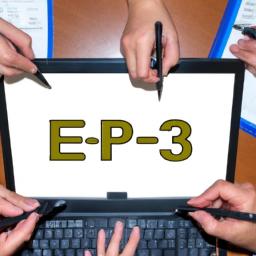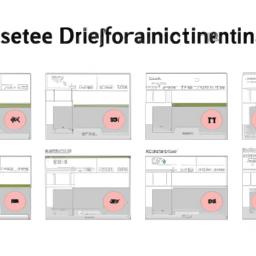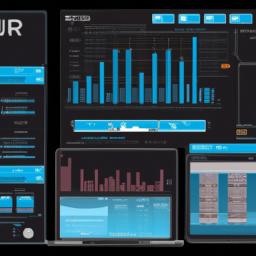E2 ERP Software: Revolutionizing Business Operations
Introduction to e2 erp software
In today’s fast-paced business world, staying ahead of the competition requires efficient management of operations and resources. This is where E2 ERP Software comes into play. But what exactly is E2 ERP Software, and why is it crucial for businesses? Let’s dive in and explore the answers.
What is E2 ERP Software?
E2 ERP Software, also known as Enterprise Resource Planning Software, is a comprehensive solution designed to streamline and integrate various business processes. It acts as the nerve center, connecting different departments within an organization and enabling efficient coordination and communication. From inventory management to financial tracking, E2 ERP Software provides a centralized platform to optimize operations and enhance productivity.
Importance of E2 ERP Software in Business Operations
In the competitive business landscape, maintaining a competitive edge is crucial for sustained growth. E2 ERP Software plays a pivotal role in achieving this by providing a range of benefits. Firstly, it helps businesses streamline their processes, eliminating redundant tasks and reducing manual errors. By automating routine operations, employees can focus on more strategic activities, boosting overall efficiency.
Moreover, E2 ERP Software offers real-time visibility into every aspect of the business, enabling better decision-making. With access to accurate data and analytics, managers can make informed choices, optimize resource allocation, and identify areas for improvement. Additionally, E2 ERP Software facilitates effective communication between departments, fostering collaboration and synergy.
In the next section, we will delve deeper into the key features of E2 ERP Software and how they can revolutionize your business operations. So, stay tuned!
Continue to Key Features of E2 ERP Software
Benefits of Implementing E2 ERP Software
In today’s fiercely competitive business world, organizations are constantly seeking ways to optimize their operations and gain a competitive advantage. Implementing E2 ERP Software offers a multitude of benefits that can transform the way businesses operate. Let’s explore some of these advantages in more detail.
Streamlined Business Processes
One of the primary benefits of implementing E2 ERP Software is the streamlining of business processes. By integrating various departments and functions onto a single platform, E2 ERP Software eliminates the need for multiple disjointed systems, spreadsheets, and manual processes. This consolidation enables seamless data flow, reduces duplication of efforts, and enhances overall operational efficiency.
Improved Efficiency and Productivity
E2 ERP Software automates routine tasks, freeing up valuable time for employees to focus on more critical activities. With automated workflows and standardized processes, organizations can reduce human errors, improve accuracy, and boost productivity. Employees can easily access the information they need, collaborate effectively, and make faster decisions, leading to increased efficiency across the board.
Enhanced Data Accuracy and Integrity
Accurate and reliable data is essential for making informed business decisions. With E2 ERP Software, organizations can ensure data accuracy and integrity through centralized data storage and real-time updates. This eliminates data silos and reduces the risk of errors caused by manual data entry or outdated information. Consequently, decision-makers can rely on accurate data to drive strategic initiatives and achieve better outcomes.
Better Decision Making
E2 ERP Software provides organizations with access to real-time data and advanced analytics capabilities. With comprehensive insights into various aspects of the business, decision-makers can make data-driven decisions. Whether it’s forecasting demand, optimizing inventory levels, or identifying trends and patterns, E2 ERP Software equips organizations with the tools necessary for informed and timely decision making.
Cost Savings
Implementing E2 ERP Software can lead to significant cost savings in various ways. By automating processes and reducing manual efforts, organizations can minimize labor costs. Additionally, streamlined operations and improved efficiency result in reduced waste, lowered inventory carrying costs, and optimized resource allocation. These cost savings contribute to the overall profitability and sustainability of the business.
In the next section, we will explore the key factors to consider when choosing the right E2 ERP Software for your business. So, let’s move on!
Continue to Choosing the Right E2 ERP Software
How to Choose the Right E2 ERP Software for Your Business
As businesses recognize the importance of E2 ERP Software in optimizing their operations, the next crucial step is selecting the right software that aligns with their specific needs. With numerous options available in the market, it’s essential to consider key factors before making a decision. Let’s explore the essential aspects to evaluate when choosing the perfect E2 ERP Software for your business.
Assessing Your Business Needs
Before diving into the sea of options, it’s crucial to assess your business requirements thoroughly. Identify the pain points, challenges, and areas that need improvement. Consider aspects such as inventory management, production planning, financial management, customer relationship management (CRM), human resources management, and reporting and analytics. By understanding your specific needs, you can narrow down the software that offers the necessary features.
Evaluating Vendor Reputation and Expertise
When selecting an E2 ERP Software, it’s essential to partner with a reputable vendor that has extensive expertise in the industry. Research and evaluate the vendor’s track record, customer reviews, and testimonials. Look for their experience in implementing similar solutions and their commitment to customer support. A reliable vendor will provide ongoing assistance and timely updates to ensure the software’s effectiveness.
Scalability and Flexibility of the Software
Businesses evolve and grow over time, and your chosen software should be able to scale and adapt accordingly. Consider the scalability and flexibility of the E2 ERP Software. Can it accommodate your future needs? Will it integrate with other tools or software? Look for a solution that can grow with your business and accommodate any future changes or expansions.
Integration Capabilities
Efficient communication and seamless integration between different systems are crucial for a successful ERP implementation. Evaluate the integration capabilities of the software you are considering. Can it integrate with your existing systems, such as CRM or accounting software? Smooth data flow and integration will enhance productivity and prevent data silos.
User-Friendliness and Training Support
The usability of the software is a critical aspect to consider. A user-friendly interface ensures that employees can quickly adapt to the new system, minimizing disruptions in workflows. Additionally, check if the vendor offers comprehensive training and support to ensure a smooth transition for your team. Adequate training and support will help employees maximize the software’s potential and drive adoption.
Pricing and Return on Investment (ROI)
Lastly, consider the pricing structure and the potential return on investment (ROI) the software can provide. Compare the costs of different solutions and weigh them against the features and benefits they offer. Look for a solution that provides a balance between affordability and functionality. Additionally, consider the long-term ROI the software can bring in terms of improved efficiency, cost savings, and business growth.
By carefully evaluating these factors, you can choose an E2 ERP Software that meets your business needs and sets the foundation for streamlined operations and growth. In the next section, we will discuss the implementation and adoption of E2 ERP Software. Stay tuned!
Continue to Implementation and Adoption of E2 ERP Software
Implementation and Adoption of E2 ERP Software
Implementing and adopting E2 ERP Software is a crucial step towards optimizing your business operations. To ensure a smooth transition and maximize the benefits of this powerful tool, it is essential to follow a structured approach. Let’s explore the key steps involved in the implementation and adoption process.
Planning and Preparation
Before diving into the implementation phase, thorough planning and preparation are necessary. This involves assessing organizational needs, understanding the existing processes, and defining clear objectives. By aligning the software implementation strategy with business goals, you can ensure a tailored solution that meets your specific requirements.
Data Migration and System Configuration
One of the critical aspects of E2 ERP Software implementation is migrating existing data and configuring the system. This involves transferring data from legacy systems or spreadsheets to the new ERP software. It is crucial to ensure data accuracy and integrity during this process. Additionally, system configuration involves setting up modules, workflows, and user permissions to align with your business structure and processes.
Training and Change Management
To achieve successful adoption of E2 ERP Software, comprehensive training programs and change management strategies are essential. Educating employees on how to use the software effectively and adapt to new processes is vital for a smooth transition. Providing training sessions, user manuals, and ongoing support can help employees embrace the change and maximize their productivity with the new system.
Testing and Go-Live
Before fully deploying the E2 ERP Software, thorough testing is essential to identify any potential issues or bugs. This involves conducting system testing, user acceptance testing, and ensuring all functionalities are working as intended. Once the testing phase is complete, it’s time to go live and implement the software across the organization. This transition should be planned carefully to minimize disruptions and ensure a seamless integration.
Ongoing Support and Maintenance
Even after the successful implementation of E2 ERP Software, continuous support and maintenance are crucial. Regular updates, bug fixes, and user support should be provided to ensure the software’s optimal performance. Additionally, periodic evaluations and system audits can help identify areas for improvement and ensure the software continues to meet evolving business needs.
By following these steps, you can ensure a successful implementation and adoption of E2 ERP Software, empowering your business with streamlined processes and enhanced productivity.
Continue to Success Stories of Companies Using E2 ERP Software






